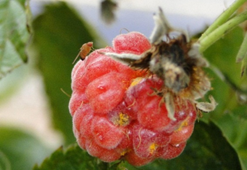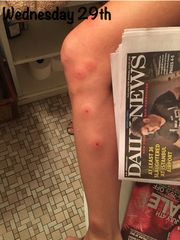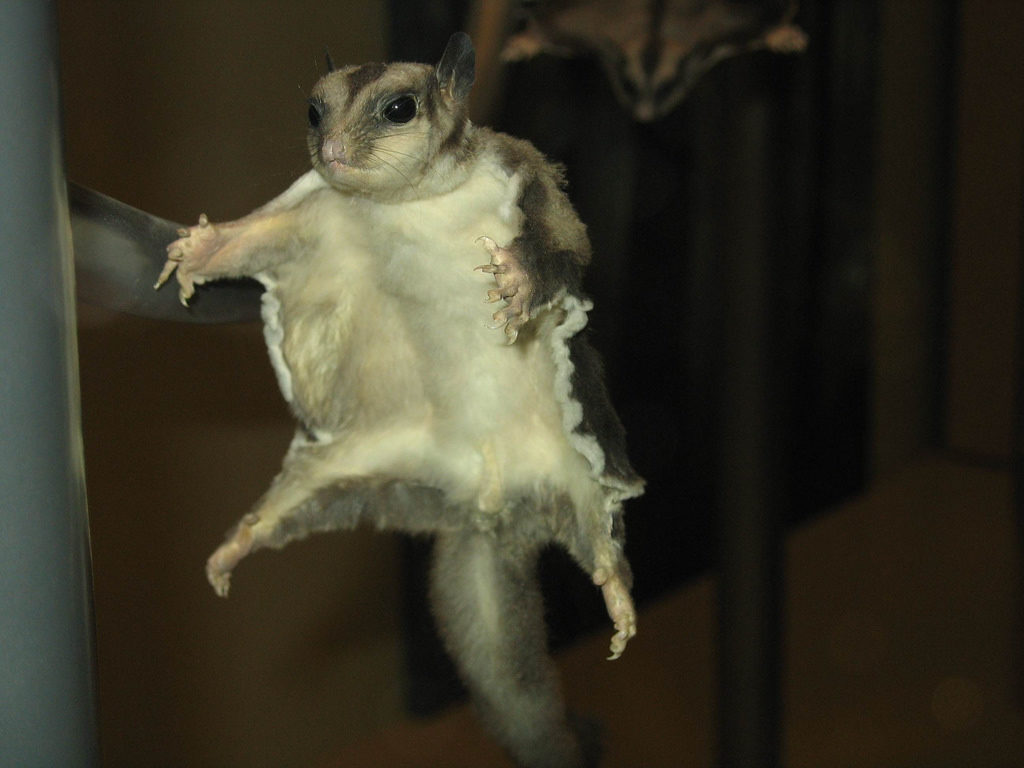
The Spotted Wing Drosophila (SWD) is a vinegar fly of East Asian origin that can cause damage to many fruit crops.
The spotted wing fruit fly, also known as Spotted Wing Drosophila or SWD is a new pest problem that originated in Asia and was only first identified in the United States in California in 2008. The populations of the insect can be quite scattered. It has been found in many types of areas, but particularly where fruit is available for the fruit flies to feed on.
SWD larvae feed on healthy, ripening fruits. In particular, SWD will feed on thin-skinned, soft fruits such as raspberries, blackberries, blueberries, strawberries, grapes, plums and cherries.
A single female can lay one to 60 eggs per day and 200–600 eggs in her lifetime. A female lays approximately one to three eggs per oviposition site. The eggs are laid singly and are randomly distributed on fruits.
Fruit infestation is initially manifested by scars on the fruit surface left by ovipositing females (stinging). The initial oviposition site becomes sunken. Damage is caused primarily by larvae feeding on fruit pulp turning the fruit flesh brown and soft. The larger larvae cut breathing holes in fruit. Infested fruit collapse around the feeding site very rapidly and rot due to mold or secondary infections
Spotted wing Drosophila: A serious pest for the home gardener
This invasive fly, spotted wing Drosophila, can infest and destroy fruits of many plants in home gardens and landscapes.
June 6, 2017 – Author: Duke Elsner, Michigan State University Extension
A pink raspberry receptacle is a sign of spotted wing Drosophila. The receptacle should be white when picking raspberries. Photo by Diane Brown, MSU Extension.
Since the spotted wing Drosophila (SWD), Drosophila suzukii, was first found in Michigan in 2010, it has become a serious pest of commercially-grown raspberries, blueberries, cherries and other fruit crops, resulting in the loss of well over 25 million dollars. This insect can also be a troublesome pest in home fruit plantings, especially for people who wish to keep pesticide use to minimal levels.
The adult SWD is a small fly, 2-3 millimeters long; the body is usually colored in shades of brown, and its large, compound eyes are red. Adult females can insert eggs through the skin of healthy, intact fruits.
The next stage of SWD is a legless, elongated maggot that feeds internally on the flesh of fruits, causing it to rapidly decay and lose fruit quality. More information about identifying SWD and the damage it makes can be found in Michigan State University Extension’s two-page publication, “Spotted Wing Drosophila Management in Home Fruit Plantings.”
Tasmanian berry growers fear spotted wing drosophila is on its way
Johanna Baker-Dowdell
As North-West produce growers within the Spreyton fruit fly zones batten down the hatches to protect their crops and livelihoods this week, berry growers at an international conference in Launceston have been discussing a far more dangerous threat: spotted wing drosophila.
The spotted wing drosophila has been highlighted as a serious threat to berry and cherry growers and it has been making its way around the world, but has not hit Australian shores – yet.
NSW Primary Industries department describes spotted wing drosophila as “a small fly similar in size to vinegar flies which sometimes gather around over-ripe fruit”.
“Most drosophila flies feed on damaged over-ripe fruit. Spotted wing drosophila is a serious pest because it attacks healthy ripening fruit as well as damaged or split fruit,” the department website states.
Many pesticides have proven to be ineffective against this pest.
Taking into mind the problems faced by the farmers C Tech Corporation has developed this unique product CombirepelTM that is been made from green technology. It is 100%
Our product is compliant with RoHS, RoHS2, ISO, EU BPR, APVMA, NEA and REACH and is FIFRA exempted. The green technology-based product can protect the crops and prevent the loss caused by the SWD and other insects as well.
CombirepelTM is available in lacquer form. These products can be directly sprayed or applied to the application as a topical application. It can be applied to the already laid pipes and tubing in the farm. The lacquer is compatible with most of the surfaces like wood, metal, concrete, polymers, ceramics, etc.

Our CombirepelTM masterbatch can be incorporated with various polymeric applications like agricultural and other protective films, pipes, wires, and cables etc. while they are manufactured. This will prevent the pests from gnawing on the polymeric application.
CombirepelTM is available in liquid concentrate which can be mixed in paints and be applied on the fences in the garden and farms. It can aslo be sprayed on the storage areas and equipment rooms.
CombirepelTM pest repellent spray can be sprayed on the infested area to repel the pests.
Thus, using our products, you can get an effective solution to fight menace caused by SWD and many such insects!
Contact us at technical.marketing@ctechcorporation.com to keep the pests away.
Also, visit our websites:
http://www.ctechcorporation.com/
http://www.rodrepel.com/
http://www.termirepel.com/
http://www.combirepel.com/
Follow our Facebook pages at:
1] https://www.facebook.com/Combirepel-411710912249274/
2] https://www.facebook.com/Termirepel-104225413091251/
3] https://www.facebook.com/Rodrepel-120734974768048/
Follow us on our Twitter pages at:
1] https://twitter.com/rodrepel
2] https://twitter.com/termirepel
3] https://twitter.com/combirepel














